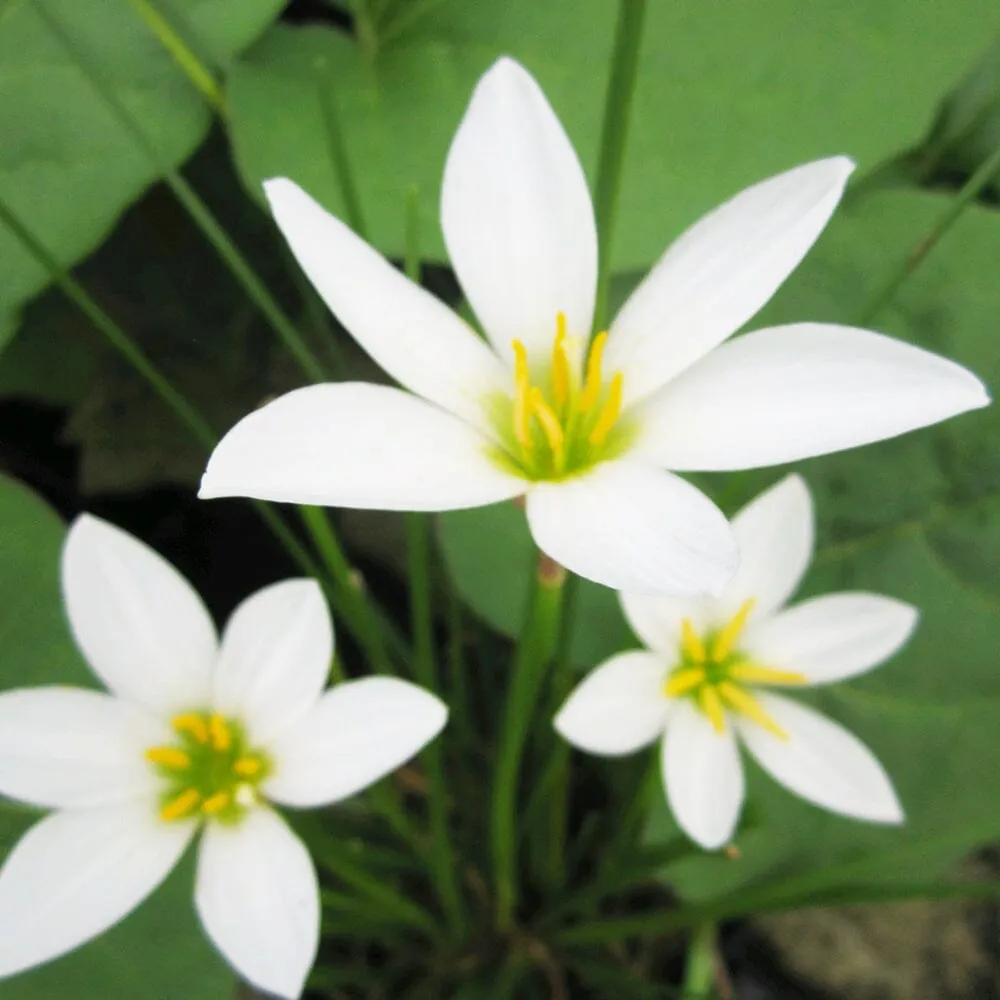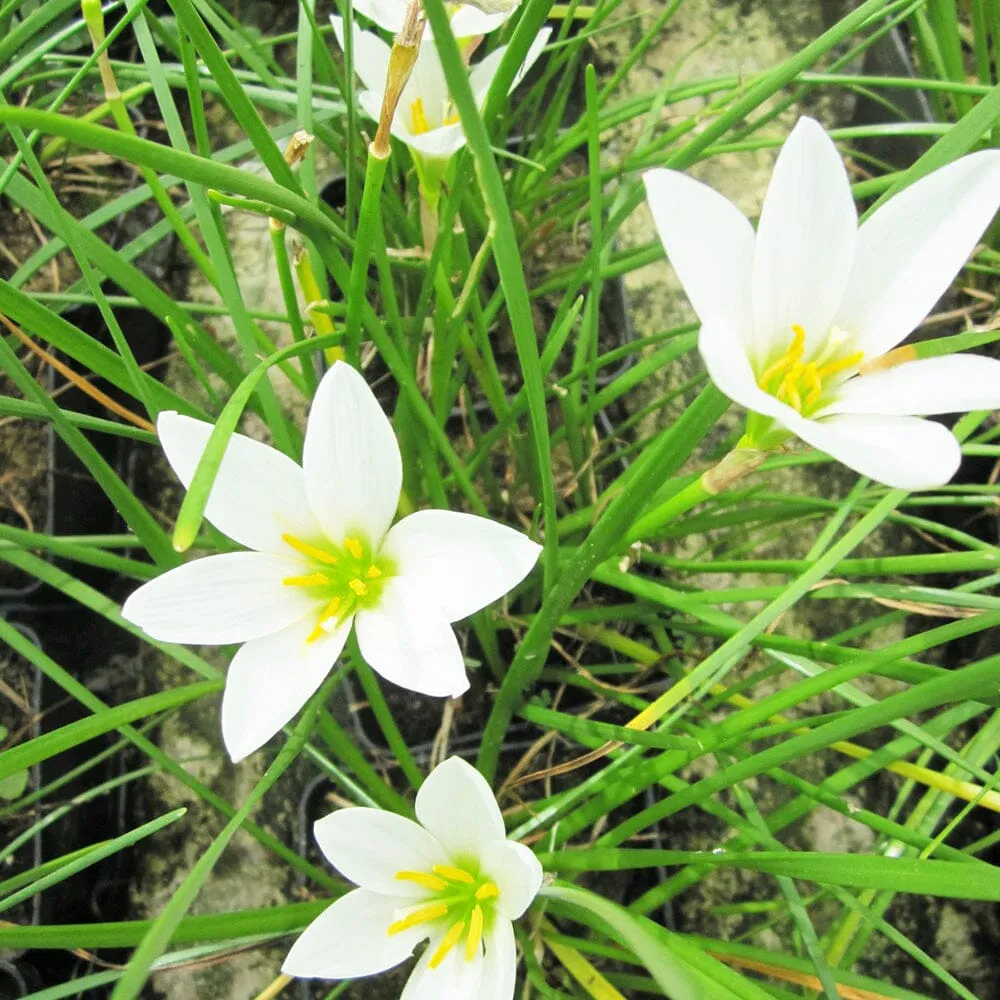Zephyranthes candida, commonly known as the White Rain Lily or White Fairy Lily, is a perennial bulbous plant from the Amaryllidaceae family. It is native to South America but is widely cultivated in many regions for its charming white flowers and low-maintenance nature. Here's a detailed description and care guide for Zephyranthes candida:
Description:
Zephyranthes candida features clumps of narrow, strap-like leaves that emerge from underground bulbs. The leaves are bright green and reach a height of about 30-40 cm (12-16 inches). The plant produces trumpet-shaped flowers on leafless stems, rising above the foliage. The flowers are pure white, about 5-7 cm (2-3 inches) in diameter, and have six petals arranged in a star-like pattern. They bloom in late spring to early summer and may continue to bloom sporadically throughout the season.
Care Guide:
Light: Zephyranthes candida prefers full sun to partial shade. It thrives in bright, indirect sunlight. Provide at least 4-6 hours of sunlight per day for optimal growth and blooming.
Water: This plant is drought-tolerant but appreciates regular watering during the growing season. Water the soil thoroughly when it becomes dry, allowing excess water to drain away. Avoid overwatering, as it can lead to bulb rot. During periods of dormancy or in winter, reduce watering.
Soil: Zephyranthes candida prefers well-draining soil. It can tolerate a range of soil types, including sandy or loamy soil. Incorporate organic matter such as compost or well-rotted manure into the soil to improve its fertility and drainage.
Temperature: This plant is hardy in USDA hardiness zones 7-11. It prefers moderate temperatures but can tolerate heat and humidity. In cooler regions, it may require protection or be grown as a container plant that can be moved indoors during winter.
Fertilizer: Zephyranthes candida does not require heavy feeding. Apply a balanced, slow-release fertilizer during the growing season, following the package instructions. Alternatively, you can use a water-soluble fertilizer diluted to half strength once a month. Avoid excessive fertilization, as it can promote foliage growth at the expense of blooming.
Mulching: Apply a layer of organic mulch around the plants to help retain soil moisture, suppress weed growth, and maintain a more even soil temperature. Use materials such as wood chips, straw, or shredded leaves.
Maintenance: Remove spent flowers to encourage continuous blooming and prevent self-seeding. After the blooming season, allow the foliage to die back naturally. This plant goes dormant in winter, and the leaves will naturally wither and fade. Avoid cutting back the foliage until it has turned yellow or brown.
Propagation: Zephyranthes candida can be propagated through division of bulbs. Lift the bulbs in early spring or late summer and separate the offsets or bulbils. Replant them immediately at the same depth as the original bulb, spacing them about 5-10 cm (2-4 inches) apart.
Pests and Diseases: Zephyranthes candida is generally not prone to serious pest or disease issues. However, keep an eye out for aphids or snails that may occasionally attack the plant. Treat any infestations promptly with appropriate organic or chemical controls.
Zephyranthes candida is a delightful plant that adds a touch of elegance to gardens, borders, or containers. Its dainty white flowers and graceful foliage make it a popular choice among gardeners. By following these care guidelines, you can successfully cultivate Zephyranthes candida and enjoy its charming blooms for many seasons.

 Cart(
Cart(












